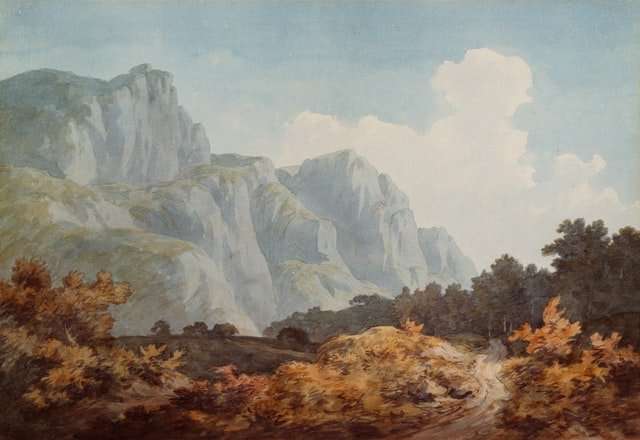Maze is the future of art. It s the beauty of simplicity and the complexity of imagination. Why write a story when you can create a maze? Maze is the art form for all ages, from a five year old kid to an eighty year old man. Mazes are beautiful, addictive and challenging. They are visually stunning, stimulating and fun.
There are no words in a maze. Only images that tell a story with no beginning and no end. A maze is not like one of those stories that has a beginning, a middle and an end because it s made up of many unique stories.
Tired of linear narratives? Like riddles? Like visual poetry? Like mazes? Well come visit Mazeworld by Marc Pena for a world full of mazes!
Have you ever seen a maze? Mazes have been around for a very long time, and they were once used to represent the unknown. They are basically an intricate system of pathways, with only one path leading to the end. The word maze came from the Old English mæs, meaning “bewilder” or “to confuse”.
Throughout history, artists have used mazes in their work. From painted labyrinths on the walls of Chartres Cathedral in France to a contemporary art installation titled “The Maze,” Marc Pena uses mazes as a metaphor for life itself. He says that his artwork is like a maze because it is not complete until someone views it; it is open to interpretation and each person can see different things in it.
In his artwork Marc uses many different materials such as mirrors, paint, wood, and other materials which he combines together to create the optical illusion of a maze. His work reveals what seems impossible or illusive by breaking down barriers that traditionally separate disciplines such as sculpture and painting. It also challenges our perceptions by using unconventional materials such as mirrors and glass.
Marc Pena’s art is mesmerizing. It’s also difficult to understand. His work is a series of self-portraits, each one a maze. The mazes have no right path or wrong path. If you try to find your way through, you’ll get lost. The mazes are meant to be seen, not solved.
The mazes are fun at first, but they quickly become frustrating. You can’t help but notice that some mazes are simpler than others and wonder why you can’t find your way through the more complicated ones. How do you solve a maze if there is no right answer?
Pena’s art is about perception and perspective. Mazes force us to interact with them in different ways; we try to find our way out of them, but we also look for meaning within them and appreciate how much work was involved in creating them. We are forced to change our perspective on what a maze is — it’s not just something cute and fun for kids anymore — it’s an art form that demands more from us than we might have thought possible.
You can play with Pena’s mazes yourself, or watch videos of people playing with them here: […]
It’s worth noting that the difference between Pena’s art and Escher’s is that Escher was not trying to represent a maze as it might appear in the real world, while Pena is. Escher’s work is about impossible geometry; Pena’s work is about possible mazes.
Pena says he wants his art to be “visible” and “appreciated.” This can be taken two ways. It could mean that he intends for viewers to literally see the maze and appreciate it for the art form. Or it could mean that he wants viewers to notice the extra-maze significance of his art, and then appreciate it for that (and also for its representational ability).
But this latter reading assumes that viewers are already familiar with mazes, which is unlikely given that most of us don’t think much about mazes in our daily lives. In order for us to notice a maze’s significance, we have to have some understanding of what a maze is. So if we are going to appreciate Pena’s art, we have to be able to see it as a representation of something we do understand: a maze.
If you’re not sure what I mean by “something we understand,” think of an optical illusion. The best optical
So I was pleased to see Global Mazes, an exhibition of Pena’s work at the Museum of Contemporary Art, opening on March 3. The show is a retrospective organized by MOCA Chief Curator Helen Molesworth and well worth checking out — especially if you’re a fan of Pena’s work.
The artist will be in town for the show’s opening, doing an artist’s talk at the museum on March 3 at 7:30 pm. On Thursday, March 4, he’ll be giving a lecture at 6 p.m. at the Hammer Museum (10899 Wilshire Blvd., LA) as part of its series “The Artist in Residence.” Both events are free; tickets may be required for the latter.
**MOCA is located at 250 S. Grand Ave., downtown Los Angeles; for more information about this exhibit and other upcoming shows there, visit www.moca.org **
Pena’s maze paintings are not mazes at all. The viewer is not meant to get lost in them; the point is that they are so big and complex that it’s impossible to see them all at once. This is not a flaw, but the point of view. Pena is exploring his own field of vision and challenging the viewer to do the same. It’s an invitation to think about what seeing really means, and more broadly about how we navigate our world.
The maze is a metaphor for the world we live in. This particular maze was created with a computer program, which means that it has no definite start or finish. It doesn’t have to be perfect, it just has to be enough of a challenge to make us think.
It is meant to be a visual demonstration of how things work in our world, namely how we can go along on an easy path, and suddenly encounter something that makes us wonder what we are doing here and why.
The maze is pretty simple, but the world outside the maze is complex. It contains hundreds of thousands of paths to take. Which one you take depends on your background and your experiences. No one person can know all the paths; no one person can create every path. Most people don’t even know that there are multiple ways to get from point A to point B, let alone all the possible points between where they are now and their goal.
Many times we accept things as true without questioning them because someone told us that’s how it is and we have no reason to believe otherwise (or even if we do question it). We may not even realize that there might be something else (or multiple things) out there that would work better for us. But if we are willing



